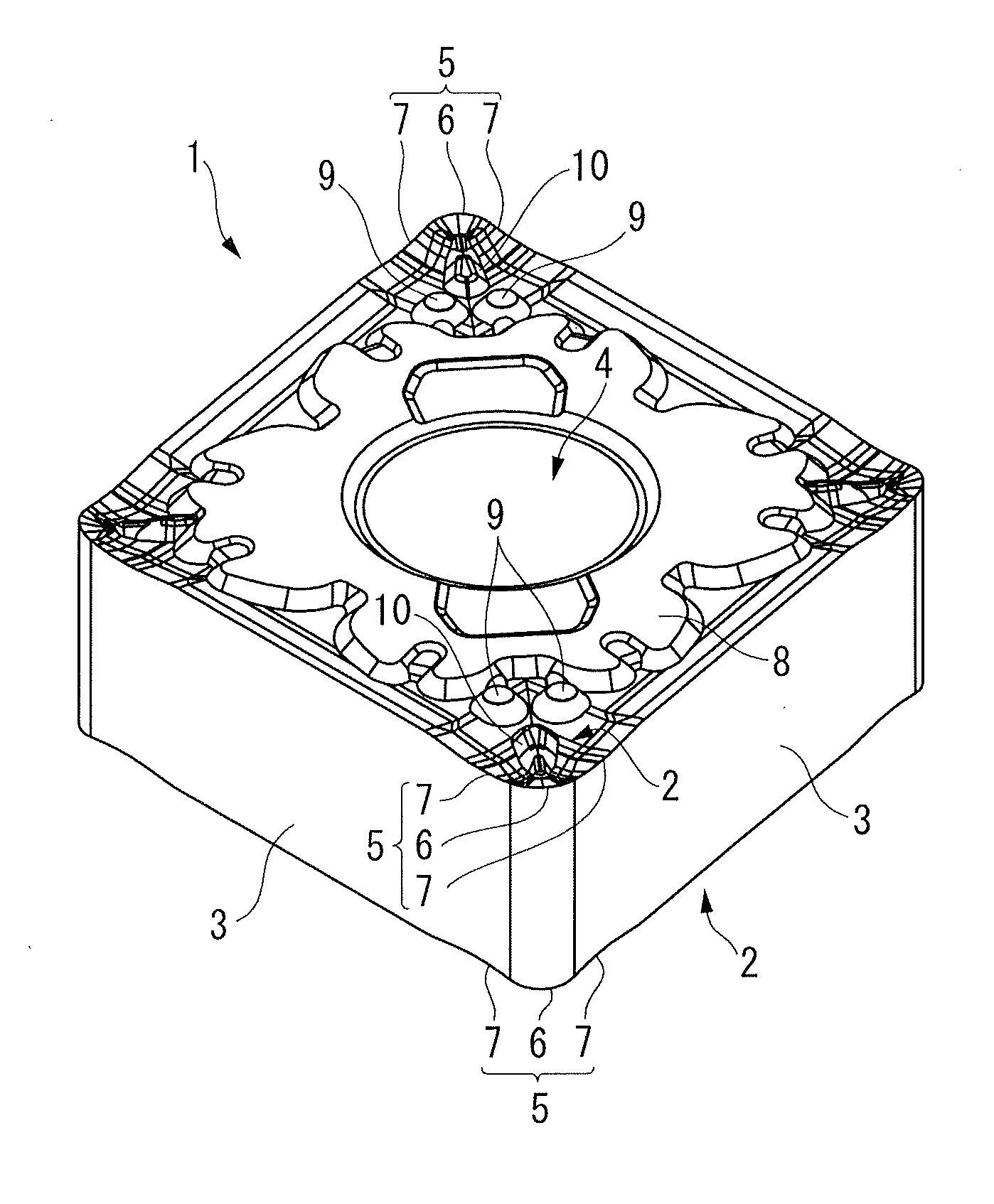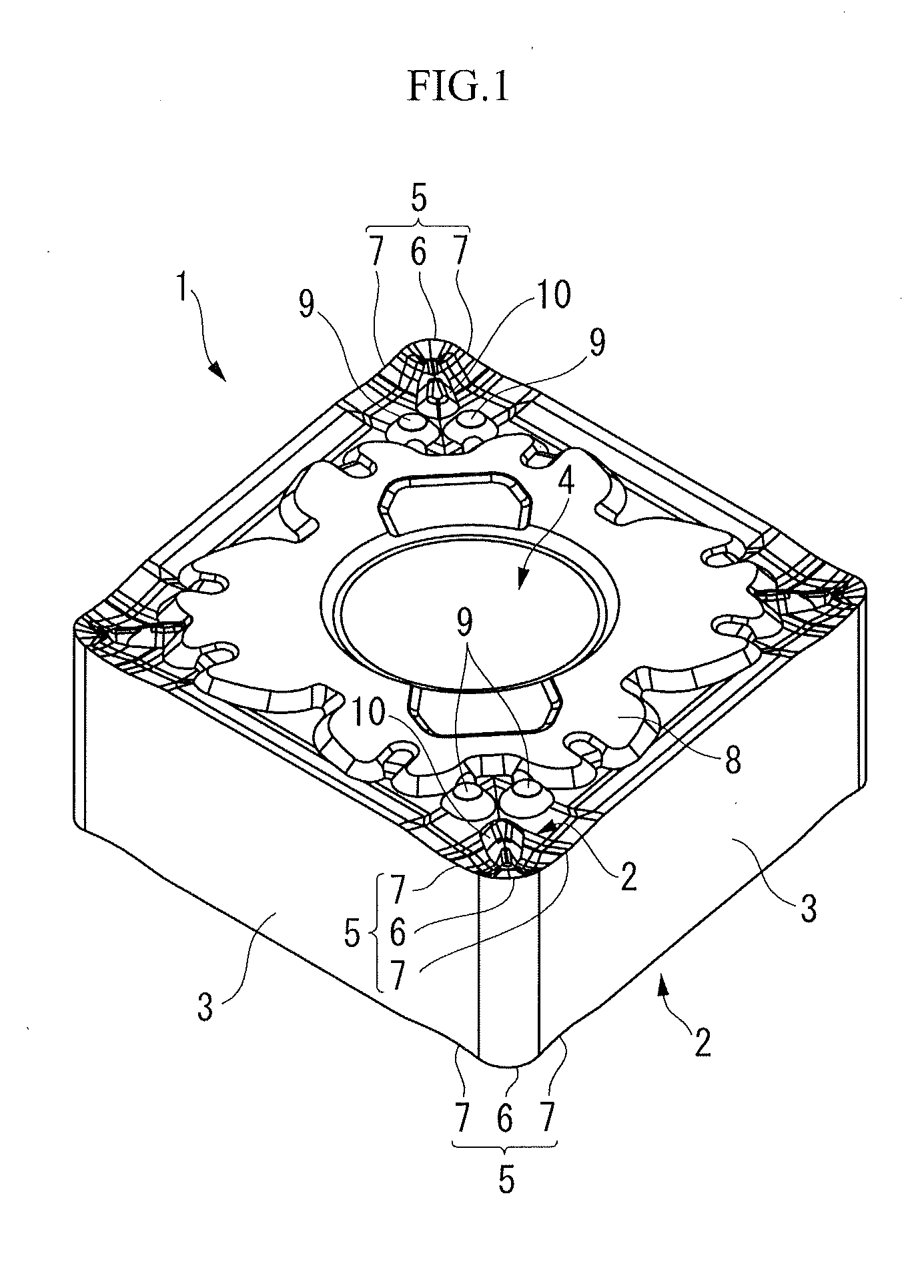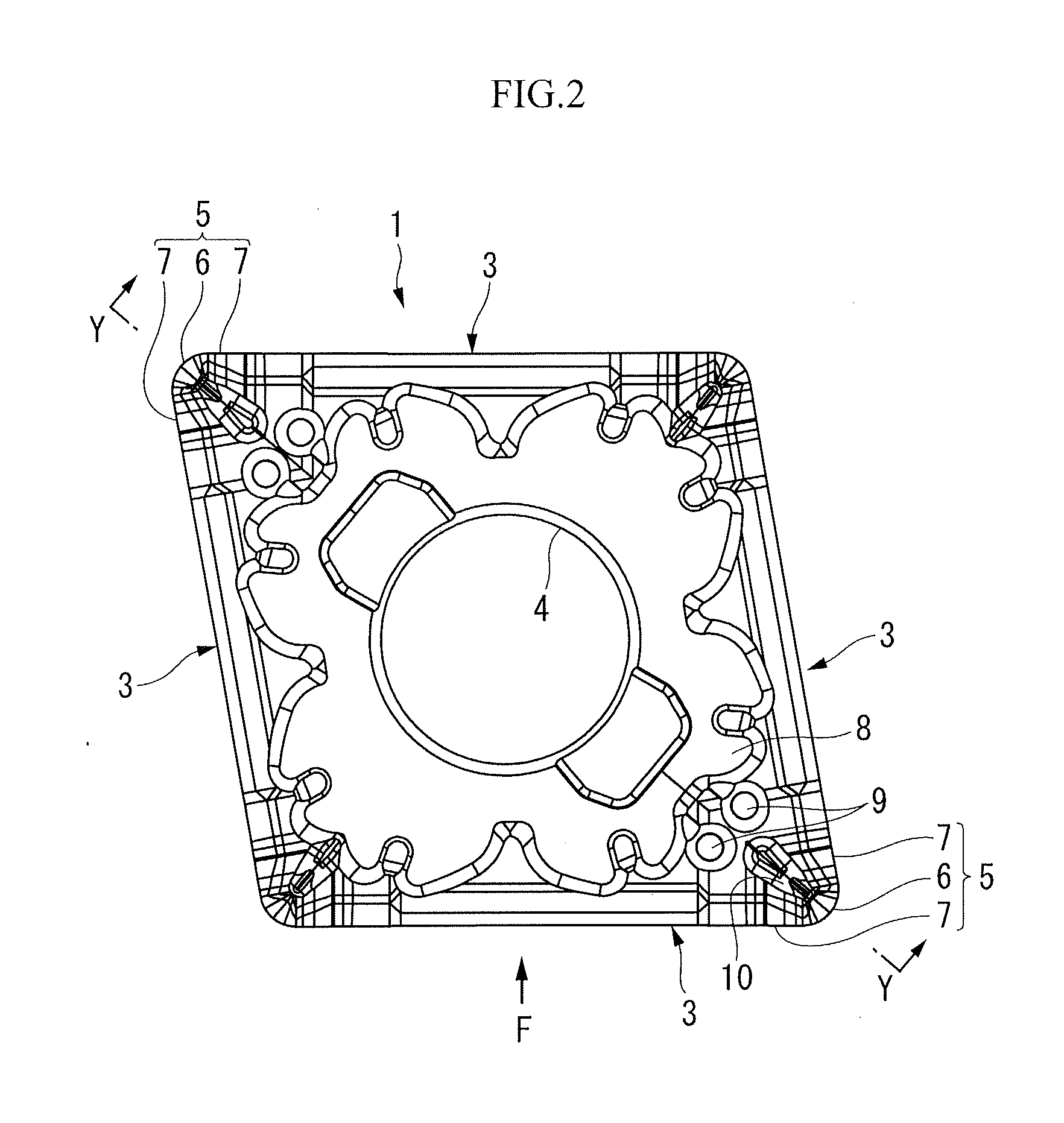Cutting insert
a cutting edge and insert technology, applied in the field of cutting inserts, can solve the problems of low machinability and decrease the tool life, and achieve the effects of preventing fracturing and chipping of the cutting edge, reducing the occurrence of burrs, and improving the sharpness of the cutting edg
- Summary
- Abstract
- Description
- Claims
- Application Information
AI Technical Summary
Benefits of technology
Problems solved by technology
Method used
Image
Examples
examples
[0070]Next, a range in which the third region C is positioned will be demonstrated for its effect by referring to an example. In the present example, six types of cutting inserts were manufactured according to the above described embodiment in which changing a range where the third region C was positioned in a direction from the tangent line J orthogonal to the extension line I of the linear section 7 to the corner section 6 and in contact with the corner section 6 and along the extension line I. These cutting inserts are referred to as examples 1 to 6.
[0071]In these cutting inserts of the examples 1 to 6, the model number was CNMG120408, the nominal radius of corner section 6 was 0.8 (mm) and the actually measured radius R was 0.794 (mm). As described above, the rake angle θ3 of the cutting edge 5 in the third region C was 20°, the rake angles θ1, ∂2 in the first region A and the second region B were to be constant and each of which was 15°. Further, the insert main body 1 was made...
PUM
| Property | Measurement | Unit |
|---|---|---|
| inclination angle | aaaaa | aaaaa |
| inclination angle | aaaaa | aaaaa |
| depth of cut | aaaaa | aaaaa |
Abstract
Description
Claims
Application Information
 Login to View More
Login to View More - R&D
- Intellectual Property
- Life Sciences
- Materials
- Tech Scout
- Unparalleled Data Quality
- Higher Quality Content
- 60% Fewer Hallucinations
Browse by: Latest US Patents, China's latest patents, Technical Efficacy Thesaurus, Application Domain, Technology Topic, Popular Technical Reports.
© 2025 PatSnap. All rights reserved.Legal|Privacy policy|Modern Slavery Act Transparency Statement|Sitemap|About US| Contact US: help@patsnap.com



